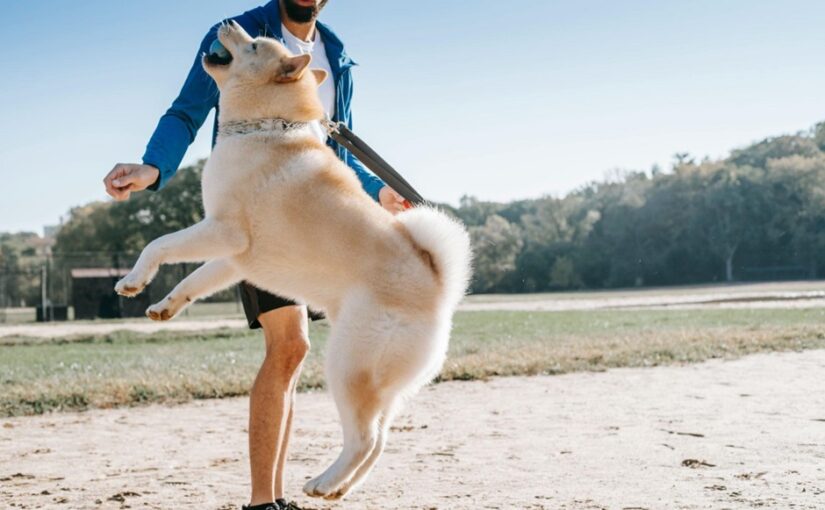When it comes to canine care, few elements are as foundational and transformative as basic obedience training. This essential aspect of dog ownership is not merely about teaching your pet a set of commands but is a profound journey that fosters understanding, respect, and an unbreakable bond between you and your furry companion.
Obedience training is a cornerstone of responsible pet ownership, offering a myriad of benefits that extend well beyond the surface level.
Why Start with Basic Obedience Training?
Basic obedience training serves as the first step in establishing a common language between you and your dog. Commands like sit, stay, come, down, and heel are not just tricks; they are fundamental tools that enhance communication. This mutual understanding is crucial for a harmonious living situation, ensuring that your dog knows what is expected of them and that you understand how to clearly and effectively communicate your wishes.
The importance of this training transcends the immediate convenience of having a well-behaved pet; it lays the groundwork for a relationship built on mutual respect and understanding.
A dog that responds to basic commands is easier to manage, which in turn reduces the stress on the owner and the household. This ease of management is particularly vital in situations that could be dangerous or stressful for your pet, such as encountering other animals or needing to stop them from running into a busy street.
The Role of Obedience Training in Socialization
Obedience training is also an invaluable tool in the socialization process of a dog. Socialization involves exposing your pet to a variety of people, animals, environments, and situations, which is essential for developing a well-rounded, sociable, and adaptable canine. Through the structure of obedience training, dogs learn to navigate these interactions positively and calmly, understanding how to behave in various scenarios and reducing the likelihood of fear-based reactions or aggression.
The benefits of this socialization are twofold: it not only makes your dog a more pleasant companion in social settings but also significantly reduces their stress in unfamiliar situations. A dog that has been properly socialized and trained is more confident, less prone to anxiety, and better equipped to handle the uncertainties of the world around them.
Enhancing Safety Through Obedience Training
One of the most compelling reasons for undertaking obedience training is the aspect of safety. Basic commands can literally be lifesavers in dangerous situations. Teaching your dog to stop, come, or stay on command can prevent accidents, such as running into traffic or engaging with potentially dangerous animals. Additionally, a well-trained dog is less likely to exhibit problematic behaviors that could lead to injuries, such as jumping up on people or engaging in rough play.
Furthermore, obedience training is not only about the physical safety of your dog and the people around them; it also pertains to their emotional and psychological well-being. A trained dog that understands boundaries and expectations is a happier dog. They experience less confusion, frustration, and anxiety, leading to a more peaceful and content life.
The Positive Ripple Effects on Health and Behavior
The advantages of basic obedience training extend into the realms of health and overall behavior. Regular training sessions are not just mental exercises; they provide physical stimulation that is crucial for a dog’s health. These sessions help in managing weight, improving cardiovascular health, and reducing the risk of obesity-related issues.
Moreover, the mental stimulation that comes from learning and practicing commands can prevent boredom and related destructive behaviors. A mentally engaged dog is less likely to resort to chewing, digging, or other problematic behaviors as a form of entertainment. This aspect of training underscores the holistic benefits of obedience training, encompassing physical health, mental well-being, and behavioral adjustments.
Building a Lifelong Bond
Perhaps the most profound impact of basic obedience training lies in the deep, enduring bond it creates between dogs and their owners. This training is an ongoing process of learning, trust, and mutual respect, laying a foundation for a strong, lifelong relationship. It is an investment in the quality of life for both the dog and the owner, enriching their years together with understanding, patience, and unconditional love.
Obedience training embodies a journey of growth, discovery, and companionship. It is an essential pillar of responsible pet ownership, highlighting the importance of communication, safety, socialization, and mutual respect. By embracing the principles of basic obedience training, owners can unlock the full potential of their relationship with their dogs, fostering a harmonious, joyful, and fulfilling life together.
This exploration into the importance of basic obedience training for dogs reveals the multifaceted benefits and profound impacts of this fundamental aspect of dog ownership. From enhancing communication and safety to fostering socialization and building a strong bond, obedience training is a crucial part of raising a happy, healthy, and well-behaved canine companion.
Effective Training Techniques: A Path to Success
Embarking on the journey of obedience training requires patience, consistency, and a positive approach. One of the most effective methodologies in dog training is positive reinforcement. This technique involves rewarding desired behaviors with treats, praise, or playtime, encouraging the dog to repeat those behaviors. The key is to immediately reward the behavior, creating a strong association between the action and the positive outcome.
Another vital component is consistency. Dogs thrive on routine and clear expectations. Using the same commands, rewards, and consequences for behaviors ensures that your dog can easily understand what is expected of them. Consistency across different family members and environments helps reinforce learning and prevents confusion.
Short, engaging training sessions are more effective than longer, tedious ones. Dogs, much like humans, have limited attention spans. Keeping training sessions short, around 5 to 15 minutes, ensures that your dog remains focused and interested. Incorporating training into daily activities, such as meal times or walks, can also reinforce learning in a variety of contexts.
Navigating Common Challenges in Obedience Training
Despite best efforts, challenges are a natural part of the training process. One common issue is a lack of focus or interest from the dog. This can often be mitigated by finding the right motivation, such as a favorite treat or toy, and training in a distraction-free environment initially. Gradually introducing distractions can help your dog learn to focus even in stimulating situations.
Another challenge is inconsistency or mixed signals from the owner. It’s crucial for all members of the household to use the same commands and reward systems to avoid confusing the dog. Professional trainers or obedience classes can provide guidance and a structured environment for training, which can be particularly beneficial for first-time dog owners or those facing significant training challenges.
The Long-term Benefits of Perseverance in Training
The benefits of persevering with obedience training are immense and long-lasting. Beyond the immediate advantages of having a well-behaved dog, the process of training establishes a deep, communicative bond between you and your pet. This relationship is characterized by mutual respect, trust, and understanding, enhancing the overall quality of life for both.
Furthermore, a well-trained dog enjoys more freedom. They can accompany their owners on various outings, interact more safely with children and other animals, and adapt more readily to new environments or situations. This freedom enriches the dog’s life experiences and socialization, contributing to a more balanced and happy demeanor.
Conclusion
Obedience training is far more than teaching a dog commands; it is a comprehensive approach to building a healthy, respectful, and loving relationship with your pet. It lays the groundwork for a happy, well-adjusted dog and a harmonious home environment. Through patience, consistency, and positive reinforcement, the journey of obedience training can profoundly impact both the dog’s and the owner’s lives, fostering a bond that enriches every moment spent together.
By embracing the principles of obedience training, owners unlock the full potential of their canine companions, paving the way for a lifetime of mutual respect, understanding, and unconditional love. This journey is not just about achieving behavioral goals but about nurturing a deep, enduring connection that transcends mere companionship, embodying the essence of the human-dog bond.
Obedience training is, undoubtedly, a cornerstone of responsible pet ownership, offering benefits that ripple through every aspect of the dog’s and owner’s lives. It’s a testament to the transformative power of patience, love, and understanding in shaping the life of your furry friend.


